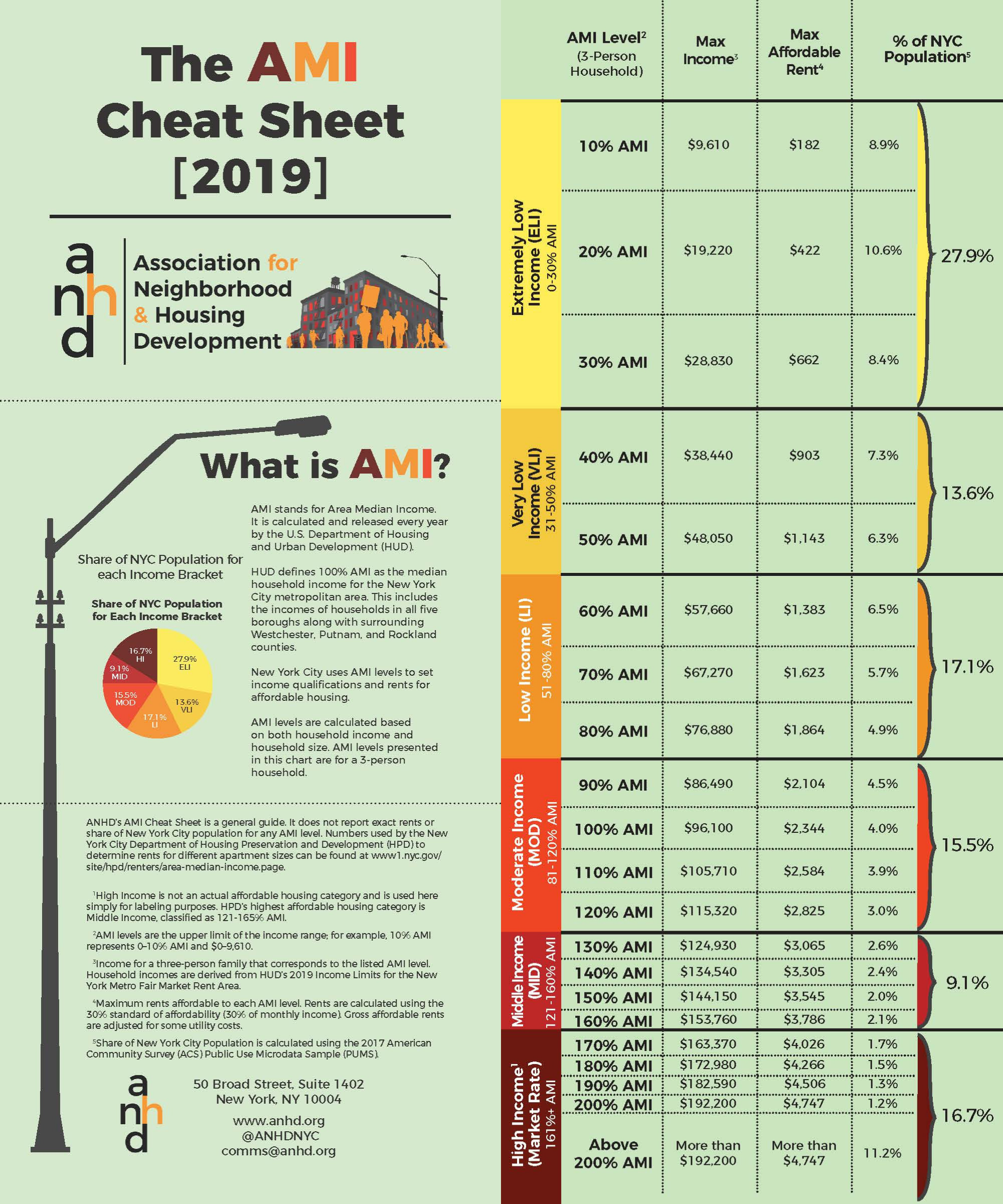Summertime Gladness: Your AMI Cheat Sheet is Here!
Your Portable Area Median Income Guide Now Has 2019 Data
We’re excited to release the 2019 AMI Cheat Sheet, with updated incomes and rent levels. The AMI Cheat Sheet is a portable guide that makes Area Media Income (AMI) easy to understand in a clear, visual format. Local partners – look out for your hard copies in the mail!
ANHD developed the AMI Cheat Sheet to help local residents, community organizers, and decision makers understand what AMI levels actually mean for their communities, and it has become an important tool for NYC’s ongoing conversations on the development and preservation of affordable housing.
Click Here to Download Your Copy!
How can I use the AMI Cheat Sheet?
-
For rezonings where the City is applying Mandatory Inclusionary Housing, use the AMI Cheat Sheet to understand how the different options relate to your community’s needs.
-
The Cheat Sheet translates AMI into real income and rent numbers, helping to interpret City affordable housing goals and policies.
-
AMI levels are used for affordable housing through New York City’s housing lottery–use the Cheat Sheet to see what apartments an applicant is eligible for.
A Refresher: What is AMI?
AMI stands for Area Median Income. It is calculated and released every year by the U.S. Department of Housing and Urban Development (HUD). HUD defines 100% AMI as the median household income for the metropolitan area. For New York City, this includes the incomes of households in all five boroughs along with surrounding Westchester, Putnam, and Rockland counties. New York City uses AMI levels to set income qualifications and rents for affordable housing, to align with these federal guidelines.
Our most recent examination of AMI levels and rent burden reveals the following:
-
Extremely Low-Income households make up about a quarter of the City’s overall population but over half of its rent-burdened population and more than three-quarters of the severely rent burdened population.
-
That’s 453,000 New York City households that make less than $28,830 per year and are spending more than half of that income on housing.
-
Extremely Low Income and Very Low-Income households combined make up 94.8% of severely rent-burdened New Yorkers.
-
Rent burden has increased in the last decade, meaning increasing numbers of New Yorkers can’t afford their housing.
-
Similarly, rents have increased 16.7% in the last decade.
The recent rent law changes earlier in June were an enormous victory for tenants fighting to remain in their homes. While the new rent laws will have a huge impact on stopping the loss of affordable housing, they won’t make existing apartments any more affordable. The outsized share of rent burden shouldered by the City’s lowest-income tenants shows the scale of the problem and the persistent need to push for deeply affordable housing.

Keep an eye out for our forthcoming Maximizing the Public Value of New York City-Financed Affordable Housing, an annual report on selected trends in city-financed affordable housing development, which discusses depth and length of affordability and its association with mission-driven and for-profit housing developers. Click here to learn more about our Mission-Driven Development work.
